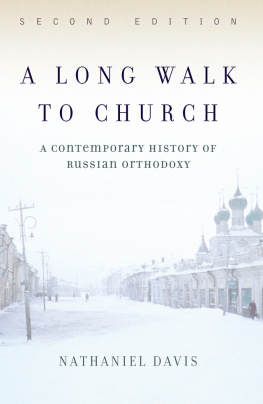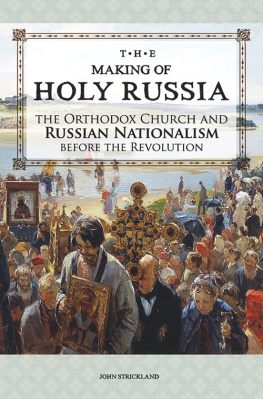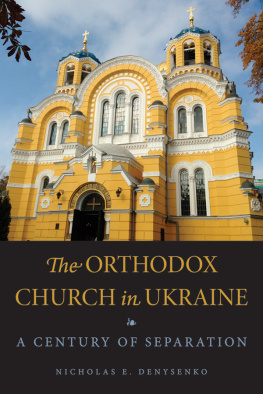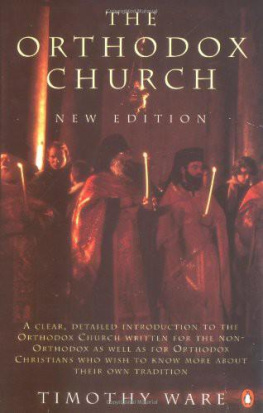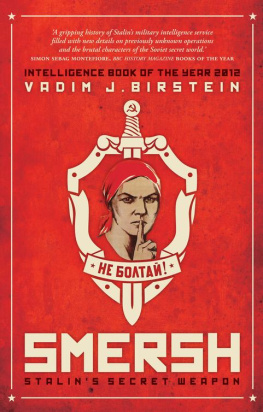A LONG WALK TO CHURCH
A Long Walk to Church
SECOND EDITION
A Contemporary History of Russian Orthodoxy
Nathaniel Davis
First published 2003 by Westview Press
Published 2018 by Routledge
711 Third Avenue, New York, NY 10017, USA
2 Park Square, Milton Park, Abingdon, Oxon OX14 4RN
Routledge is an imprint of the Taylor & Francis Group, an informa business
Copyright 2003 Taylor & Francis
All rights reserved. No part of this book may be reprinted or reproduced or utilised in any form or by any electronic, mechanical, or other means, now known or hereafter invented, including photocopying and recording, or in any information storage or retrieval system, without permission in writing from the publishers.
Notice:
Product or corporate names may be trademarks or registered trademarks, and are used only for identification and explanation without intent to infringe.
A Cataloging-in-Publication data record for this book is available from the Library of Congress.
ISBN 13: 978-0-8133-4067-8 (pbk)
ISBN 13: 978-0-8133-4070-8 (hbk)
To my wife, Elizabeth, who has sustained me always,
and my son, Tom, who has labored mightily on this book.
ON A WINTER DAY fifty years ago, I remember standing in a country village far from Moscow looking for a churchas was my wont. I approached a bent, much bundled, aged woman. I asked her if there was a church close by and, if so, where I might go to find it. Her eyes were the pale, watery blue sometimes characteristic of the old. A deeply melancholy expression came over her face, and she answered: "It's a long, long walk to church."
In point of fact, for the quarter century between Khrushchev's campaign against religion and Gorbachev's revision of policy in 1988, one could travel east from Chita for 1,000 kilometers on the Trans-Siberian Railroad without passing a single church. One could also travel 600 kilometers west from there without passing a church. Sakha-Yakutia, with an area more than the size of the United States east of the Mississippi, had only one church from the time of the Khrushchev drive until 1993. Most of the million Russians living east of the Urals and north of the sixty-second parallel had to travel almost 2,000 kilometers to reach the nearest functioning church. Truly, it was a long walk to church.
Nathaniel Davis
THIS STUDY IS A SECULAR examination of the history of the Russian Orthodox Church in recent times. It is difficult to be objective about religion. I am reminded of a cartoon published long ago of a matron in a bookshop asking for "an impartial history of the U.S. Civil War, written from the Southern point of view." For those who might be curious, I am a member of the United Church of Christ.
I am indebted to Zbigniew K. Brzezinski, to the late Philip E. Mosely, and to the late Frank Nowak, who reviewed early work that ultimately led to this manuscript. Haym Jaffe of Drexel University assisted me in statistical projections. William C. Fletcher of the University of Kansas read this manuscript and prepared a perceptive, enlightening, and immensely helpful commentary on the book and all its parts. Donald W. Treadgold of the University of Washington encouraged me to go to Westview Press and introduced me to senior editor Peter W. Kracht, who has proved extremely helpful and unfailingly supportive of my effortsas has his associate, Mick Gusinde-Duffy. The project editor, Mary Jo Lawrence, and the copy editor, Ida May B. Norton, have been extremely helpful and untiring in their care, patience, and support. I am also indebted to my wife, Elizabeth, my son, Thomas Rohde Davis, and my daughter, Margaret Davis Mainardi, for criticism, editing, and work on the draft. The manuscript was typed by my son, and some early materials were typed by my daughter. James F, Win-stead of Harvey Mudd College prepared the graphs in the volume.
Research for this study was supported in part by a grant from the International Research and Exchanges Board (IREX), with funds provided by the National Endowment for the Humanities and the United States Information Agency. Research was also supported by a fellowship from the John Randolph Haynes and Dora Haynes Foundation. None of these organizations is responsible for the views expressed.
N.D.
SINCE THE FIRST EDITION of this book appeared in 1995, the Russian Orthodox Church has passed through new trials, troubles, and opportunities. It has overcome financial stringencies in part through special export-import arrangements and inside deals with Russian government organizations, and in some cases these expedients have given rise to accusations of profiteering. The Church's canonization of the last czar, Nicholas II, has proven highly controversial. The church has also suffered from what it perceives as Roman Catholic, Protestant, and even pagan proselytizing, or creeping infiltration. It has been accused of weaknesses of leadership, particularly in Siberia and on the country's periphery. Its growth and opening of new parishes have slowed, and churches remain insufficient in much of Russian Asia and elsewhere. Human resources are strained, and the ranks of priests and deacons are unsufficient to provide adequate leadership and service in the church's almost 25,000 parishes and 600 convents. The problem of providing sufficient educational facilities to train church servers, choirmasters, and icon painters persists. Publishing facilities remain unsatisfactory. The schisms in Ukraine have thinned the ranks of some of the most dedicated church cadres and committed laity, as the generally secular, nonpracticing society in Russia remains a reality.
Yet the Russian Orthodox Church manifests a luminous faith. It plays a key political and spiritual role and has immense influence. It remains the largest community of believers in all but the Islamic south and east. It is one of the few institutions widely and deeply revered in Russia today. I am most grateful to my editor, Stephen Catalano of Westview Press, and to Cynthia Souza of Harvey Mudd College, who has typed and corrected this second edition. I am also grateful to Lubomira Stoilova for proofing the manuscript; to Holly Hauck, our departmental administrative aide, for help on numerous occasions; and to Gautam Thatte of Harvey Mudd College, who prepared the graphs in the volume. I am also grateful to Barbara Greer, the project editor, and Margaret Ritchie, the copy editor, for all their help.
Research for this study was further supported by a Fulbright scholarship, which allowed me to spend the 1996-1997 academic year in Moscow.
N.D.
Introduction:
Communism and Religion
WHEN THE COMMUNISTS took control in Russia, they were determined to subdue all opposition forces, including the Russian Orthodox Church. More fundamentally, they wanted to build a society without God, and the church blocked the way. Not only in the lands that became the Soviet Union but in every country where the communists seized power after World War II, a struggle between the state and the churches ensued.
Twice in the history of communist rule in the Soviet Union, the Bolsheviks and the Soviet state drove the church to the threshold of institutional death, or at least to its antechamber. The first time was at the end of the 1930s, when Stalin's men had wiped out virtually all of the resources of the church. The second time, although less dramatic, was in Brezhnev's "period of stagnation." Following Khrushchev's headlong assault in the early 1960s, the subsequent slow erosion of Orthodox institutional strength raised the possibility of the church's ultimate extinction.

